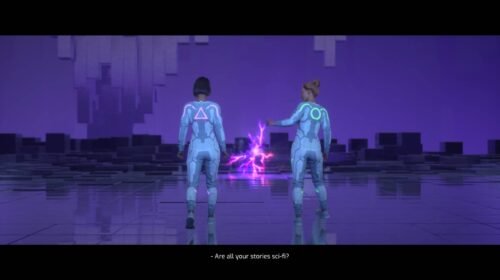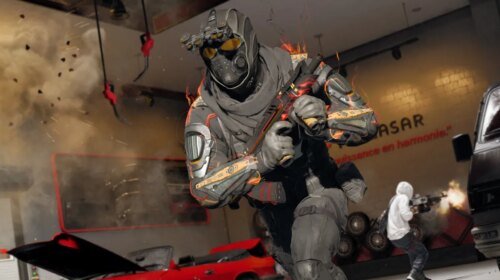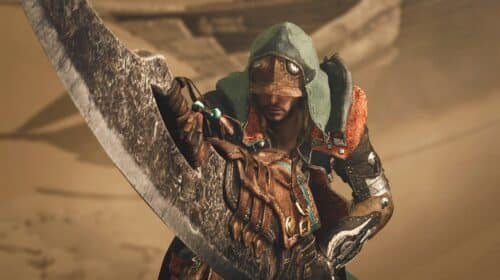5 Best Video Game Series That Never Left The PlayStation 1
5 Best Video Game Series That Never Left The PlayStation 1
One of the great tragedies in video game development is the inability to continue a beloved series or revitalize a fan favorite with the care and attention it deserves. An excellent example is Team Ninja’s dedication to the Ninja Gaiden franchise even decades after its humble beginnings on the NES.
Throughout the lifespan of the PlayStation 1, 1300 games were released in North America. Unfortunately, not all the games released on the PlayStation 1 saw a lifespan beyond that console generation. Here are the 5 best video game series that never left the original PlayStation.
5. Future Cop LAPD

Released in the United States on September 1, 1998, as a sequel to the Strike series, Future Cop LAPD is a more than competent third-person action isometric shooter. Published by Electronic Arts and developed under EA’s Redwood Shores Studios, Future Cop transformed you into a pilot of the X1-Alpha crime-fighting police mecha in 2098 Los Angeles, California.
During gameplay, you could transform your mecha into a speedy hovering police pursuit vehicle or a slower yet more powerful bi-pedal robot. Transforming into the more robust mecha allowed you to take on large tanks and stationary turrets. Pilots completed various missions around real-life Los Angeles environments such as LAX, Long Beach, and Venice Beach. To combat the mutant and crime-ridden streets of LA, pilots of the X1-Alpha were equipped with machine guns, rockets, and homing missiles.

The enemies in Future Cop LAPD ranged from on-foot thugs carrying rocket launchers to aggressively nimble tanks and attack helicopters. The absurdly fun and fast-paced missions consisted of clearing enemy strongholds, rescuing hostages, and destroying enemy encampments, all with flashy explosions and impressive 3D animations.
While certainly more than competent as an action title, what set Future Cop LAPD apart from the rest was its Precinct mode. Cited as one of the earliest MOBAs, Precinct mode pitted two X1-Alpha pilots against each other in a battle mode where the objective was to destroy and occupy the enemy base. Each player spawned on opposite ends of the map and began building up resources to attack the enemy’s base. Pilots could use defensive vehicles and items as well as deploy a swarm of deadly aircraft to overwhelm the opposition.
4. Little Big Adventure

Released in October of 1994, Little Big Adventure was a commercial success outside of the United States with over 500,000 units sold by 1999. In Little Big Adventure, you play as Twinsen, the chosen hero of planet Twinsun, to save your world and girlfriend Zoe from the evil Dr. FunFrock. Dr. FunFrock aims to enslave all the sentient species who populate Twinsun, and it is up to Twinsen to save the day and fulfill your prophecies.
Little Big Adventure allows you to free-roam around the vibrant 2D environments to explore the various locations and islands on Twinsun. Twinsen engages in dialogue with NPCs in the world and must solve puzzles and defeat enemies to advance the story. You can choose between four different behavior styles for Twinsen. These behaviors included Discreet, Normal, Sporty/Athletic, or Aggressive, and depending on which one you chose, Twinsen’s physical actions would change. For example, if Twinsen needs to move an object in the environment, the player would switch the behavior mode to Sporty to allow Twinsen to jump or run. For defensive purposes, you could switch to behavior mode Aggressive to attack and defeat enemies.

Little Big Adventure is number 4 on this list because the game is so much greater than the sum of its parts. A fun and engaging fantastical narrative with memorable characters, charming art style, whimsical music, and unique gameplay make Little Big Adventure a series that is ripe for a revival.
3. MDK

Originally Developed by Shiny Entertainment and ported from the PC to the PlayStation by Neversoft, MDK hit the scene in 1997 and immediately received positive praise for its humor, gameplay, and level design.
From destroying enemies while sliding on a metal surfboard down an abandoned mining tunnel to machine gun strafing one-eyed alien slug monsters in large outdoor arenas, MDK felt like a non-stop screen-shaking action-packed roller-coaster ride where no two levels play the same.

You play as Kurt Hectic, a badass janitor that is hesitant to save the world from an alien race whose aim is to strip the Earth of all its natural resources. Kurt has an arsenal of weapons and gadgets that complement the run-and-gun gameplay. Along the way, you will encounter rudimentary puzzles to break up the intense twitch shooting gameplay. MDK’s levels all had the added benefit of being designed by a different level artist, so no two environments are exactly alike.
MDK was developed during a time when First Person Shooters were dominating the PC gaming market. Porting MDK to the PlayStation console allowed more players to join in on the fun with a controller. You can use a mini-nuke to destroy enemy turrets, strafe around murder vehicles twice your size, and drop from orbit at terminal speeds–dodging enemies and collecting power-ups–all in the same five minutes. MDK is a game that proves you don’t need to follow the status quo to become an instant classic, one in desperate need of a sequel.
2. Parasite Eve

Resident Evil made a huge impact on the gaming industry in 1996–not only by redefining the survival-horror genre but also by paving the way for dozens of clones trying to capture the same post-launch fervor. While many games tried to be Resident Evil derivatives, some added more than just ink ribbons to the tank-controlled survival horror experience.
Enter Parasite Eve, released on September 9, 1998 and developed by Square. Parasite Eve is an action role-playing game with a linear story praised by critics for its beautiful cinematic sequences and striking graphics.

In Parasite Eve, you take control of the player-character Aya Brea, a New York City rookie police officer who attempts to thwart the antagonist Eve from destroying humanity through internal combustion. The gameplay consisted of exploring New York City’s evacuated streets, underground train tunnels, and tightly designed interior areas. Real-time combat allowed the player to move around and attack or heal as needed. With a mashup of Resident Evil movement and Final Fantasy-like gameplay and attack menus, Parasite Eve became an instant cult classic. While fans of the game received a sequel in 2000, Parasite Eve II, it would be the last installment in the series.
Square’s first M-rated video game was intended as a sequel to the novel, Parasite Eve, written by Hideaki Sena and which sold almost 2 million copies worldwide by February 2004. Additionally, the music of Parasite Eve was composed by Yoko Shimomura, and it has ascended far beyond its video game roots. Fans and music lovers equally enjoyed and praised the game’s music years after its release.
1. Um Jammer Lammy

Developed by NanaOn-Sha and published by Sony Computer Entertainment, Um Jammer Lammy was released in 1999. This PaRapper The Rapper spinoff Rhythm game gained immediate positive praise from critics worldwide. You play as Lammy, a shy left-handed guitar-wielding lamb who happens to be the leader of a rock band called MilkCan. Your mission is to unit the members of your band and makes it to your rock concert.
Um Jammer Lammy’s gameplay is almost identical to PaRapper The Rapper in that it is a timing-based rhythm game where the goal is to press buttons corresponding to the on-screen symbols in tune with the music track. Your performance is based on how well you time your button presses and how well you performed on your freestyle. Free-styling occurs at specific times throughout the level, and how well you freestyle will determine what rank you achieve.





